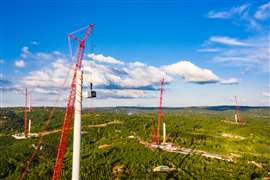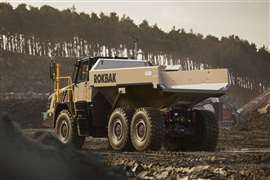Read this article in Français Deutsch Italiano Português Español
How to get your sustainability message right
03 April 2024
 Image: AdobeStock - stock.adobe.com
Image: AdobeStock - stock.adobe.com
It’s no longer enough to talk vaguely about your ‘net zero’ goals. Ben Shaw, CEO of B2B PR services company SE10, explains why construction companies need to have a meaningful dialogue with their customers about sustainability.
As the construction industry continues to navigate sustainability, communicating on this topic is no longer just about conveying messages – it’s about meaningful dialogue, communicating with purpose, and getting your facts straight.
It’s been exciting to be a part of the industry these past few years and witness (and in some cases help launch) some incredible technologies that are making real progress in advancing sustainability.
But there are some lingering questions for industry-watchers and I think one of the biggest is: how can we demonstrate authenticity, transparency, and a proven commitment to sustainability?
It is no longer enough to talk about ‘net zero’ goals and ideate around how they might be achieved.
In fact, in Europe, making these types of claims has the potential to land companies in hot water under new laws introduced at the start of the year.
Stakeholders now expect sustainability and purpose to be woven through the fabric of a brand’s identity, but how can they achieve the right balance of message and data to make their voice heard? Here are some common themes we see running through the most successful examples.
Start with why – it never gets old
Starting with why may seem a cliché, but a brand’s purpose has to be more than a series of buzzwords that lose resonance over time; it’s a set of guiding principles that infuse every action and communication in a cohesive way. And that’s why we start with ‘why’. Purpose-led communication is all about standing for something beyond profitability. It’s about demonstrating how and why you are committed to environmental, social, and governance causes that align with your brand, your customers, and wider global goals.
Of course, when we talk about the ‘why’, we also have to show the ‘how’. But to drive meaningful conversations about what you are doing, people have to know why. And it’s also what they’ll remember you for.
Get your facts straight and get them in
We’ve all seen countless examples of embellished achievements or language that glosses over shortcomings (and goodness knows sections of the PR industry have fuelled this down the years). But in today’s world, greenwashing is a very real and serious offence. As mentioned above, the European Union imposed legislation at the start of the year to combat deceptive environmental claims through its Greenwashing Directive.

This imposes strict guidelines on the accuracy and transparency of sustainability messaging, meaning companies are held accountable for misleading information. There’s no question this is a good thing but how can companies ensure they guard against greenwashing? The answer, of course, is facts. Being measured in language and avoiding exaggerated claims are the starting points, but providing data is the only true way to validate claims.
It’s also now important for companies to present a well-rounded and balanced assessment of any sustainability initiatives, and that means acknowledging progress and areas for improvement. This will help to foster a credible, authentic relationship with your audience, and at the same time offer protection from the implications of greenwashing.
Don’t be afraid to discuss the challenges
Being transparent is a surefire way of building and maintaining long-term trust with stakeholders. And transparency isn’t just about showcasing success but also being candid about the challenges and the journey to overcome them.
The new greenwashing directives mean that brands are now forced to be upfront about the tangible sustainability progress they are making. And in many ways, this is a good thing. It allows companies to tell their story over a longer timeframe and kickstart discussions online and at events on the progress that is being made.
Acknowledging the challenges a company is facing helps create a stronger connection with audiences and shows a commitment to continuous improvement. The construction industry is big, fragmented and complex. So it stands to reason that there is a long road to travel and what truly matters is progress, not perfection.
There is no one-size-fits-all approach
As I said above, the journey towards a greener construction industry will take in multiple aspects. So it’s important to avoid presenting a ‘one-size-fits-all’ solution. Job sites vary in size, scope, regulation, geography and more, so of course each has a unique set of sustainability requirements.
Brands should be encouraged by this and view it as an opportunity to celebrate and communicate diverse approaches. And don’t forget that efforts extend beyond a single product or process and should cover the entire lifecycle. From sourcing materials to manufacturing and construction to end use and on to disposal or recycling, there are so many chances to enhance sustainability, and each has its own story.
Can we collaborate?
The strongest advances in sustainability are generally achieved through cooperation and partnership. In fact, collaboration is one of the biggest trends in this area. So think about how your company might join with other brands to form powerful partnerships that can double the expertise and supercharge the results.
Much like the collaborations we see across the construction supply chain in delivering projects, the same can apply in driving sustainability. And the added bonus is that these sustainability gains also often result in better efficiency and innovation too. Ultimately, by collaborating with others, companies can demonstrate their commitment, not only to their customers, but to building a more resilient world.
Ben Shaw is CEO of B2B PR services company SE10.
STAY CONNECTED


Receive the information you need when you need it through our world-leading magazines, newsletters and daily briefings.
CONNECT WITH THE TEAM











